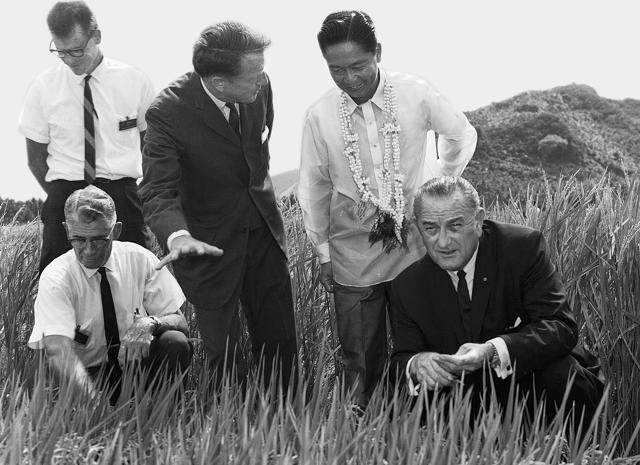When Design Harms Instead Of Helps
Bruce Nussbaum’s firsthand account of how a celebrated agro-design went terribly wrong.
It haunts me still. I was 21 years old when I participated in a design research project that ultimately saved millions of people from starvation—but it did so by sacrificing the good of many along the way, and I’ve often wondered about the project’s true cost.
I was in the Peace Corps in the Philippines in the late 1960s when the International Rice Research Institute (IRRI), an NGO established by the Ford and Rockefeller foundations, was designing new varieties of rice. One such cultivar, dubbed “IR8,” or “Miracle Rice,” basically tripled rice yields, and, together with versions of “Miracle Wheat” and other grains, significantly diminished the number of famines worldwide (the natural, climate-induced kind that happened with depressing regularity for nearly as long as humans have populated the earth). The design of the new rice was a massive breakthrough that we now take for granted.
At that time I was teaching third-grade science in Caloocan City, outside of Manila, and I traveled south to the institute’s headquarters in Los Baños, where Miracle Rice was being tested. The scientists from Ford and Rockefeller, with support from the United States Agency for International Development (USAID) and large chemical companies, were in the last stages of analyzing the newly designed rice plant. I assisted with a study comparing the efficacy of using water buffalo versus small Japanese tractors to cultivate rice fields with the new seed. Water buffalo had long been used in Asia to plow and level land, puddle rice fields, and cultivate field crops, all while providing no-cost fertilizer. Japanese planting tractors, on the other hand, had been recently introduced to help farmers save on labor time, since mechanized tillage requires fewer field laborers for the same output. I still remember how wonderful the warm, deep mud felt on my legs as I moved across the paddy, and how scared I was of the venomous paddy snakes that were known for biting between the toes. I was happy to participate in the final testing.
In the end the Japanese tractors proved more efficient; but, as with Miracle Rice, their use had unforeseen outcomes. Soon it would become clear that, in designing new rice seeds, the scientists had also designed new growing requirements. Miracle Rice needs much more water, fertilizer, insecticide, and, in part because of its increased reliance on tractors, more fuel to grow than do other rice varieties. The Green Revolution, as this new method of high-yield agriculture came to be called, could triple production, but the new growing requirements also meant higher costs—financially, but also socially and environmentally.

In the months before Los Baños, I had begun going up into the mountains of Pampanga and Tarlac in the region of central Luzon. At that time, the country’s handful of oligarchic families, who effectively dominated the political system and ran the country, presided over enormous feudal landholdings in the region. There were still many small peasant farms, however, and people were eager to own their own land. When the government began to roll out Miracle Rice, these small farmers could not compete against the oligarchs who had access to both the financing and water needed to sustain the new crop. Promises of special loan programs enabling small farmers to buy pesticides, fertilizer, and fuel for the new tractors never materialized on any significant scale. Water buffalo, one of the only sources of capital wealth, depreciated in value. Small farmers were squeezed and, in the end, lost their land to the oligarchs. The design of Miracle Rice was for these peasants a disaster.
Historically, Luzon had been a center of rebellion in the country, with peasants rising up against the country’s dominant families to reclaim the land that was taken from them. The Hukbalahap insurgency in the 1950s, for instance, which nearly brought the Philippines government to collapse, was centered in this region. With the introduction of Miracle Rice, central Luzon exploded once again. The first article I ever wrote as a journalist was for the Far Eastern Economic Review and was titled “How the Green Revolution Turned Red.”
It would be many years before I would again become involved in the field of design (I now consult, write, and teach on subjects in design, innovation, and creativity). Yet the violence that resulted from the invention of this new food crop has always tempered my view of the optimism that is so much a part of design culture. The profession proclaims good intentions; and we must be fully aware of what harm good intentions may sometimes bring.
This essay from Design and Violence was published with the author’s permission. Published by MoMA and distributed by D.A.P., the book will be released in June 2015. View MoMA’s Design and Violence website here.
[All Photos: courtesy IRRI]
(142)














